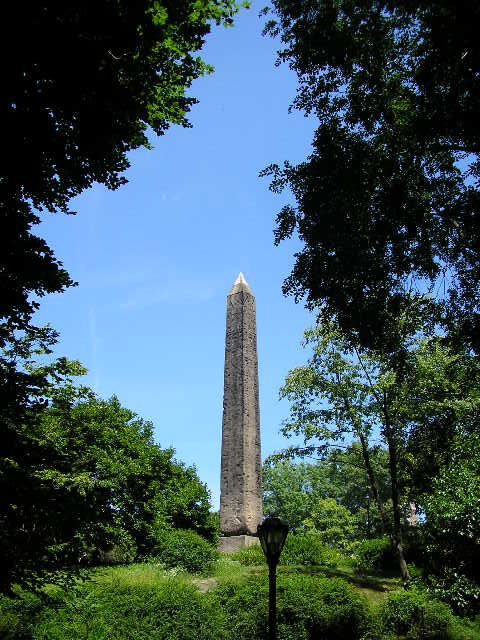Place de la Concorde is one of Europe's most magnificent and historic squares. It is in the shape of an octagon, with buildings on only one side. Construction began in 1748 and took fifteen years to complete. Its purpose was to provide a beautiful setting for a statue of King Louis. The square was first called Place Louis XV. It turned out to be a very unlucky spot. In 1770 a fireworks display held here to celebrate the wedding of Marie Antoinette to future King Louis XVI turned deadly when one hundred and thirteen people were trampled to death in the crowd.
Nineteen years later the French revolution began and the square was renamed Place de Revolution. Revolutionaries tore down the statue of the king. In its place they erected a guillotine, which was used to behead 1,119 people, including both Louis XVI and his wife, Marie Antoinette!
After the revolution, the square was renamed Place de la Concord, hoping that it could become a monument to peace. Additional statues and fountains were added, all of which had something to do with the beauty of France. However, the center piece of the square, the Luxor Obelisk has little to do with French history. Obelisks are tall, tapering monuments, with a top in the shape of a pyramid. Many were built in ancient Egypt, then transported all over the world.
 |
| Luxor Obelisk |
The Luxor Obelisk is made of pink granite and stands over 73 ft high. It is over 3300 years old and stood for centuries at the tomb of Pharaoh Rames II of Egypt. It is covered in hieroglyphics that tell of the glory of his reign. Egypt gave it and another obelisk to France as a gift in 1829 and the French Government was relieved to be able to place something non political in this tragic square. However, getting the 220 ton monument to France from Egypt was no easy matter. The transport took over three years and raising the obelisk in the square was a grand event witnessed by over 20,000 people! In order for future generations to appreciate the effort that went into bringing this obelisk to Paris, the story of how it was transported and raised is engraved in the base. The second obelisk never came to France. It remained in Egypt, although it was considered the property of France. A few years ago France officially returned it to Egypt (Even though it never left!)
At the same time that Egypt gave this obelisk to France it also gave one to England and to the United States. The obelisk in England sits along the Thames River in London, while the one in the US is in Central Park in New York City.
 |
| Central Park Obelisk |
Most of us have also seen another famous obelisk in the United States. Think about it before clicking this link. www.nps.gov/nr/travel/wash/dc72.htm
I think it is amazing how things connect. Chautauqua has been to London, DC, Paris, and maybe soon Egypt. I think we should add obelisk to our website!
No comments:
Post a Comment